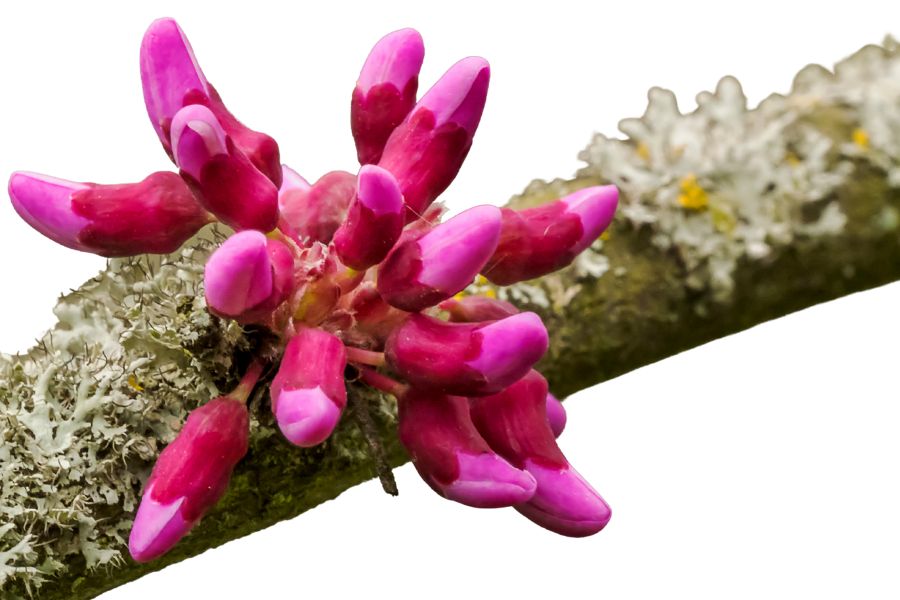West Virginia has a great list of valuable edible plants growing in the wild, and some of the most prized ones are only around for a short window of time.
Hen of the Woods and black trumpet mushrooms are two examples that seasoned foragers keep a close eye on each fall. Their texture, flavor, and scarcity give them a kind of status you won’t find in your average produce aisle.
Later in the season, hickory nuts start to drop, and wild persimmons ripen into soft, sweet fruit. If you’ve never tasted one fresh from the tree, it’s easy to underestimate just how good they are. Black walnuts show up around the same time, but they take some effort to process.
This isn’t about gathering whatever you see—these plants are valuable because they’re hard to buy and hard to beat once you’ve tasted them fresh. There’s a wide range of edible wild foods across West Virginia’s terrain that offer something far more interesting than anything cultivated.
Knowing when and where to look can mean the difference between an empty basket and a truly diverse harvest.
What We Cover In This Article:
- What Makes Foreageables Valuable
- Foraging Mistakes That Cost You Big Bucks
- The Most Valuable Forageables in the State
- Where to Find Valuable Forageables in the State
- When to Forage for Maximum Value
- The extensive local experience and understanding of our team
- Input from multiple local foragers and foraging groups
- The accessibility of the various locations
- Safety and potential hazards when collecting
- Private and public locations
- A desire to include locations for both experienced foragers and those who are just starting out
Using these weights we think we’ve put together the best list out there for just about any forager to be successful!
A Quick Reminder
Before we get into the specifics about where and how to find these plants and mushrooms, we want to be clear that before ingesting any wild plant or mushroom, it should be identified with 100% certainty as edible by someone qualified and experienced in mushroom and plant identification, such as a professional mycologist or an expert forager. Misidentification can lead to serious illness or death.
All plants and mushrooms have the potential to cause severe adverse reactions in certain individuals, even death. If you are consuming wild foragables, it is crucial to cook them thoroughly and properly and only eat a small portion to test for personal tolerance. Some people may have allergies or sensitivities to specific mushrooms and plants, even if they are considered safe for others.
The information provided in this article is for general informational and educational purposes only. Foraging involves inherent risks.
What Makes Foreageables Valuable
Some wild plants, mushrooms, and natural ingredients can be surprisingly valuable. Whether you’re selling them or using them at home, their worth often comes down to a few key things:
The Scarcer the Plant, the Higher the Demand
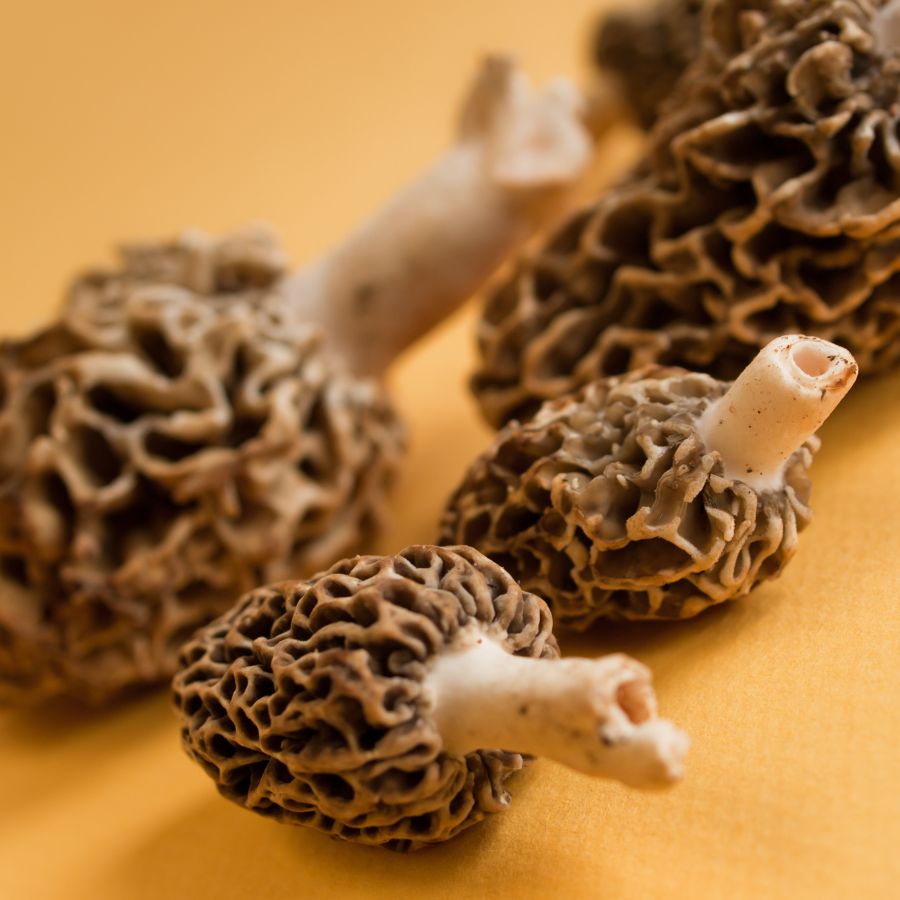
Some valuable forageables only show up for a short time each year, grow in hard-to-reach areas, or are very difficult to cultivate. That kind of rarity makes them harder to find and more expensive to buy.
Morels, truffles, and ramps are all good examples of this. They’re popular, but limited access and short growing seasons mean people are often willing to pay more.
A good seasonal foods guide can help you keep track of when high-value items appear.
High-End Dishes Boost the Value of Ingredients
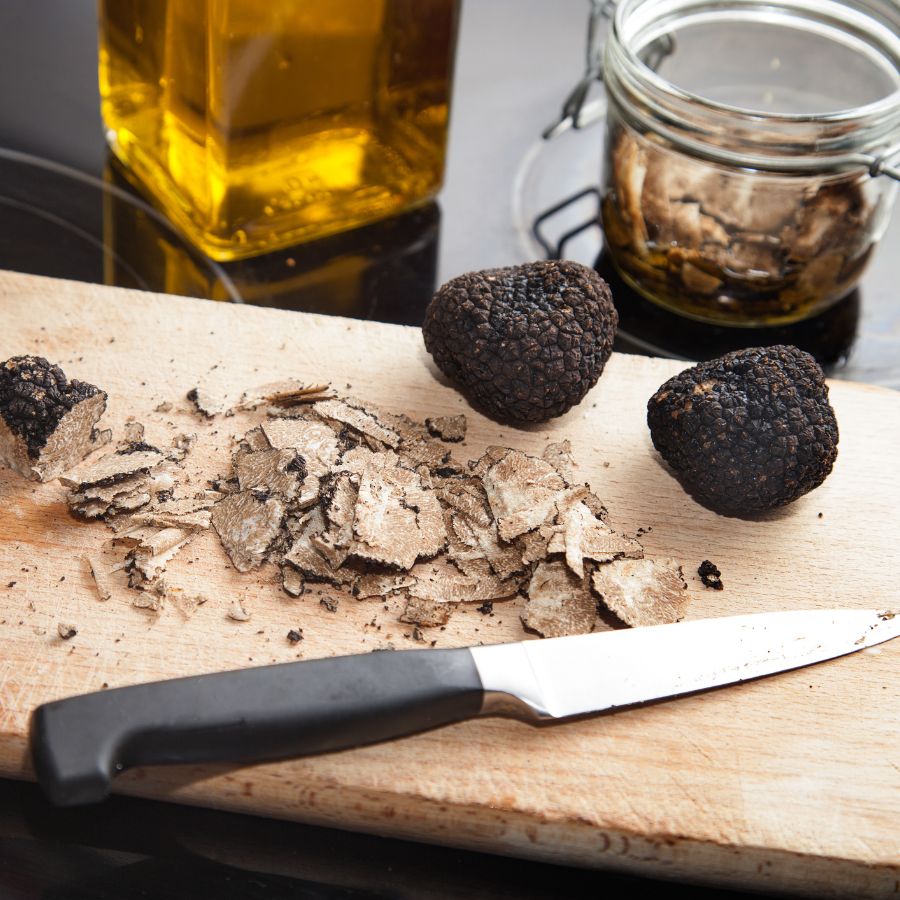
Wild ingredients that are hard to find in stores often catch the attention of chefs and home cooks. When something unique adds flavor or flair to a dish, it quickly becomes more valuable.
Truffles, wild leeks, and edible flowers are prized for how they taste and look on a plate. As more people try to include them in special meals, the demand—and the price—tends to rise.
You’ll find many of these among easy-to-identify wild mushrooms or herbs featured in fine dining.
Medicinal and Practical Uses Drive Forageable Prices Up
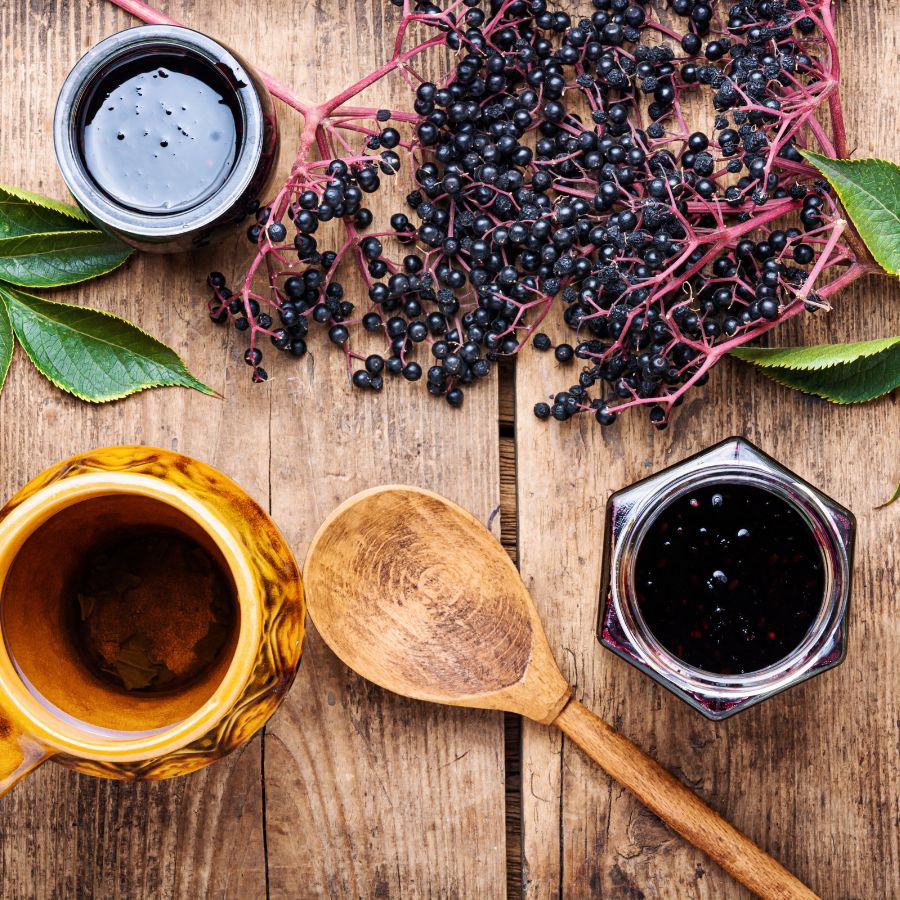
Plants like ginseng, goldenseal, and elderberries are often used in teas, tinctures, and home remedies. Their value comes from how they support wellness and are used repeatedly over time.
These plants are not just ingredients for cooking. Because people turn to them for ongoing use, the demand stays steady and the price stays high.
The More Work It Takes to Harvest, the More It’s Worth
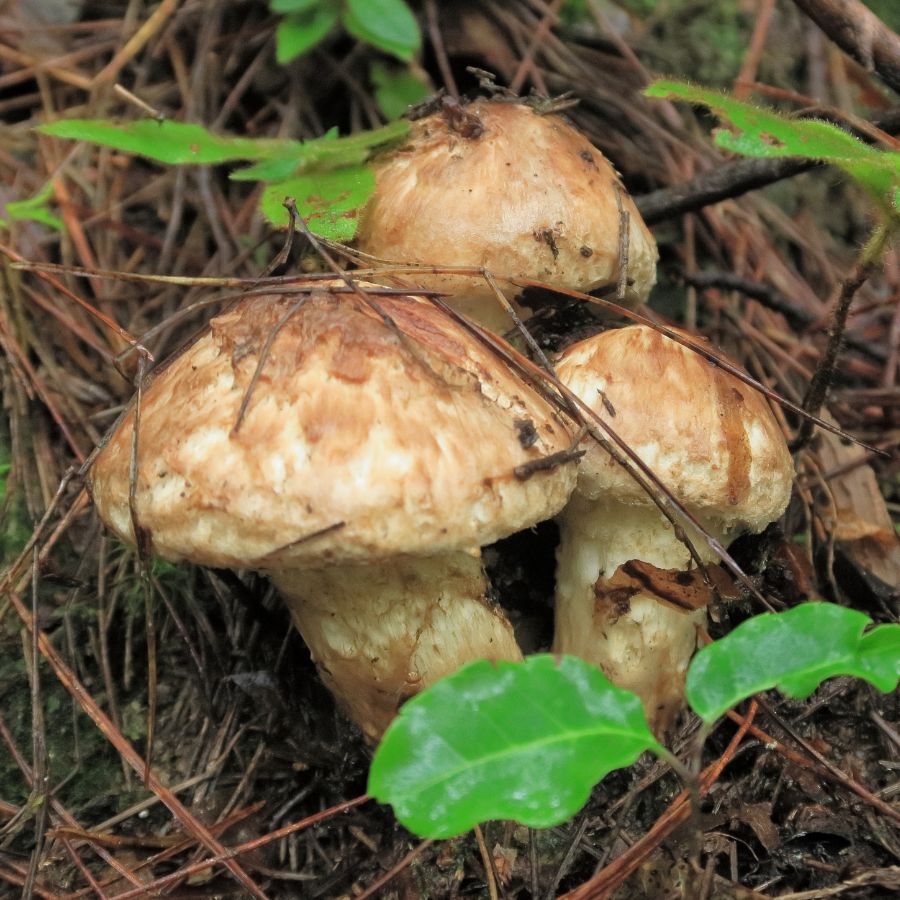
Forageables that are hard to reach or tricky to harvest often end up being more valuable. Some grow in dense forests, need careful digging, or have to be cleaned and prepared before use.
Matsutake mushrooms are a good example, because they grow in specific forest conditions and are hard to spot under layers of leaf litter. Wild ginger and black walnuts, meanwhile, both require extra steps for cleaning and preparation before they can be used or sold.
All of that takes time, effort, and experience. When something takes real work to gather safely, buyers are usually willing to pay more for it.
Foods That Keep Well Are More Valuable to Buyers
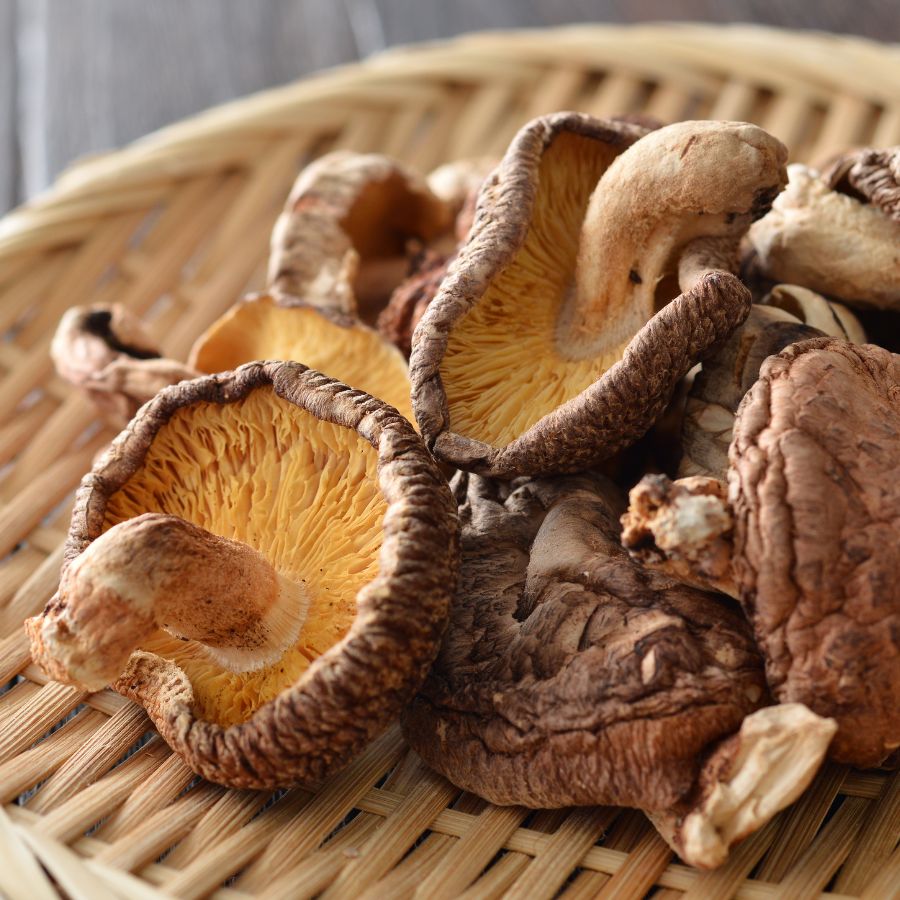
Some forageables, like dried morels or elderberries, can be stored for months without losing their value. These longer-lasting items are easier to sell and often bring in more money over time.
Others, like wild greens or edible flowers, have a short shelf life and need to be used quickly. Many easy-to-identify wild greens and herbs are best when fresh, but can be dried or preserved to extend their usefulness.
A Quick Reminder
Before we get into the specifics about where and how to find these mushrooms, we want to be clear that before ingesting any wild mushroom, it should be identified with 100% certainty as edible by someone qualified and experienced in mushroom identification, such as a professional mycologist or an expert forager. Misidentification of mushrooms can lead to serious illness or death.
All mushrooms have the potential to cause severe adverse reactions in certain individuals, even death. If you are consuming mushrooms, it is crucial to cook them thoroughly and properly and only eat a small portion to test for personal tolerance. Some people may have allergies or sensitivities to specific mushrooms, even if they are considered safe for others.
The information provided in this article is for general informational and educational purposes only. Foraging for wild mushrooms involves inherent risks.
Foraging Mistakes That Cost You Big Bucks
When you’re foraging for high-value plants, mushrooms, or other wild ingredients, every decision matters. Whether you’re selling at a farmers market or stocking your own pantry, simple mistakes can make your harvest less valuable or even completely worthless.
Harvesting at the Wrong Time
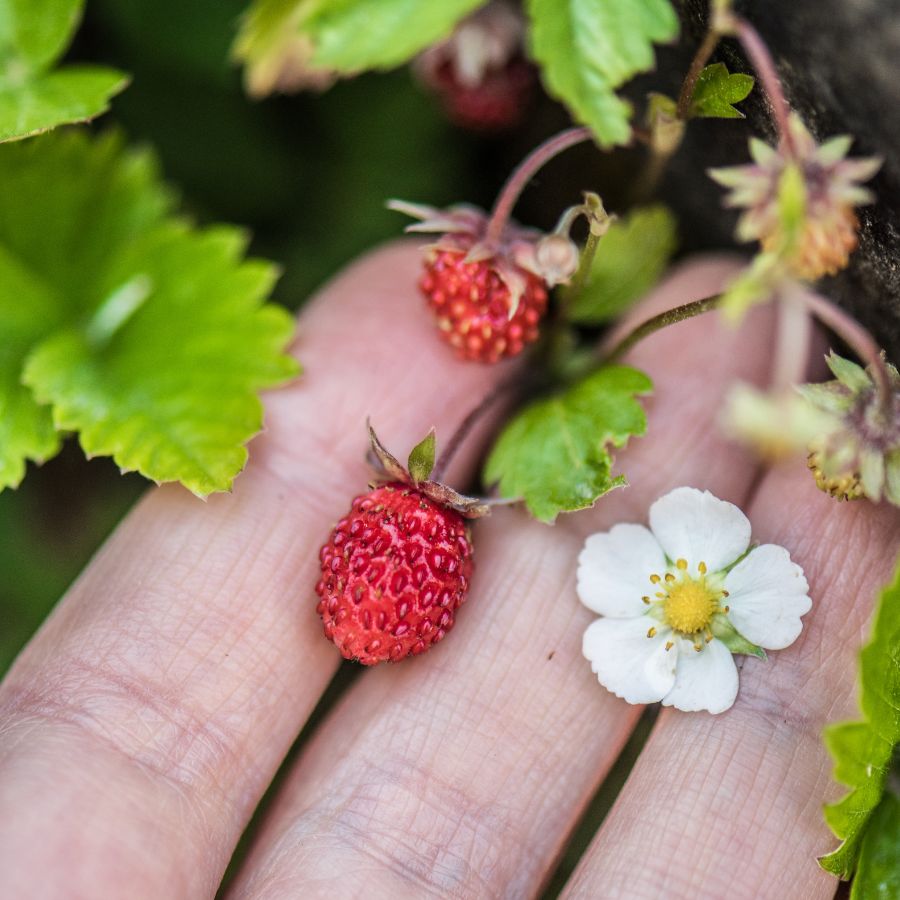
Harvesting at the wrong time can turn a valuable find into something no one wants. Plants and mushrooms have a short window when they’re at their best, and missing it means losing quality.
Morels, for example, shrink and dry out quickly once they mature, which lowers their weight and price. Overripe berries bruise in the basket and spoil fast, making them hard to store or sell.
Improper Handling After Harvest
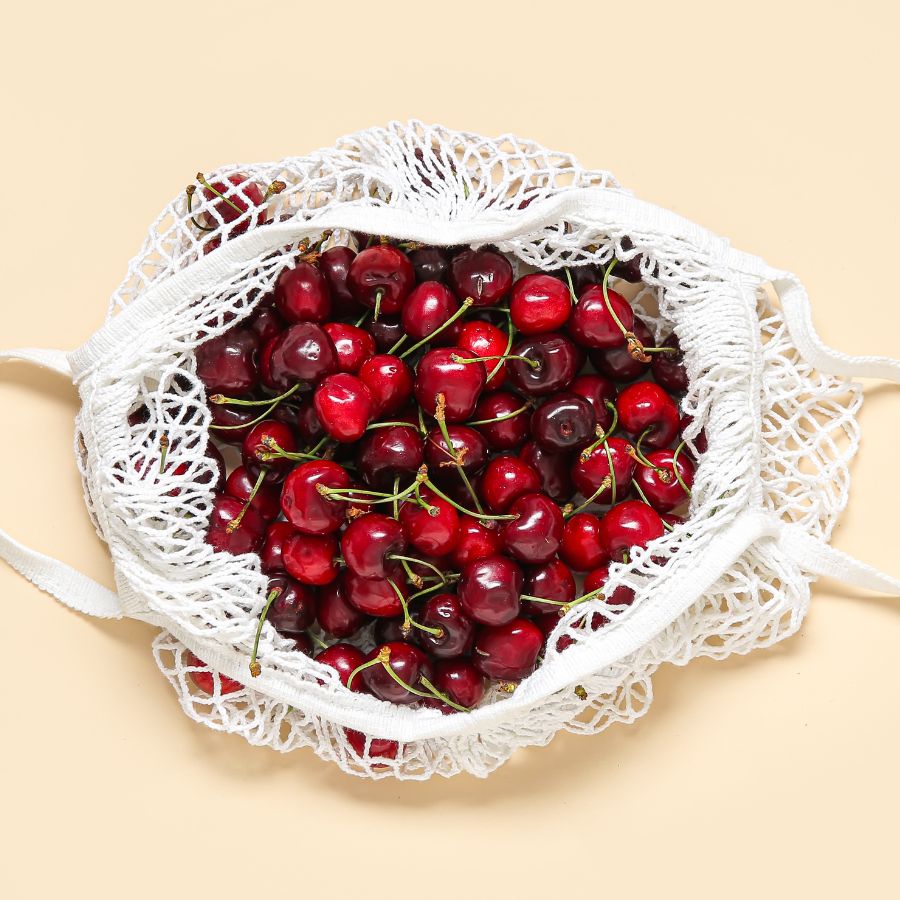
Rough handling can ruin even the most valuable forageables. Crushed mushrooms, wilted greens, and dirty roots lose both their appeal and their price.
Use baskets or mesh bags to keep things from getting smashed and let air circulate. Keeping everything cool and clean helps your harvest stay fresh and look better for longer.
This is especially important for delicate items like wild roots and tubers that need to stay clean and intact.
Skipping Processing Steps
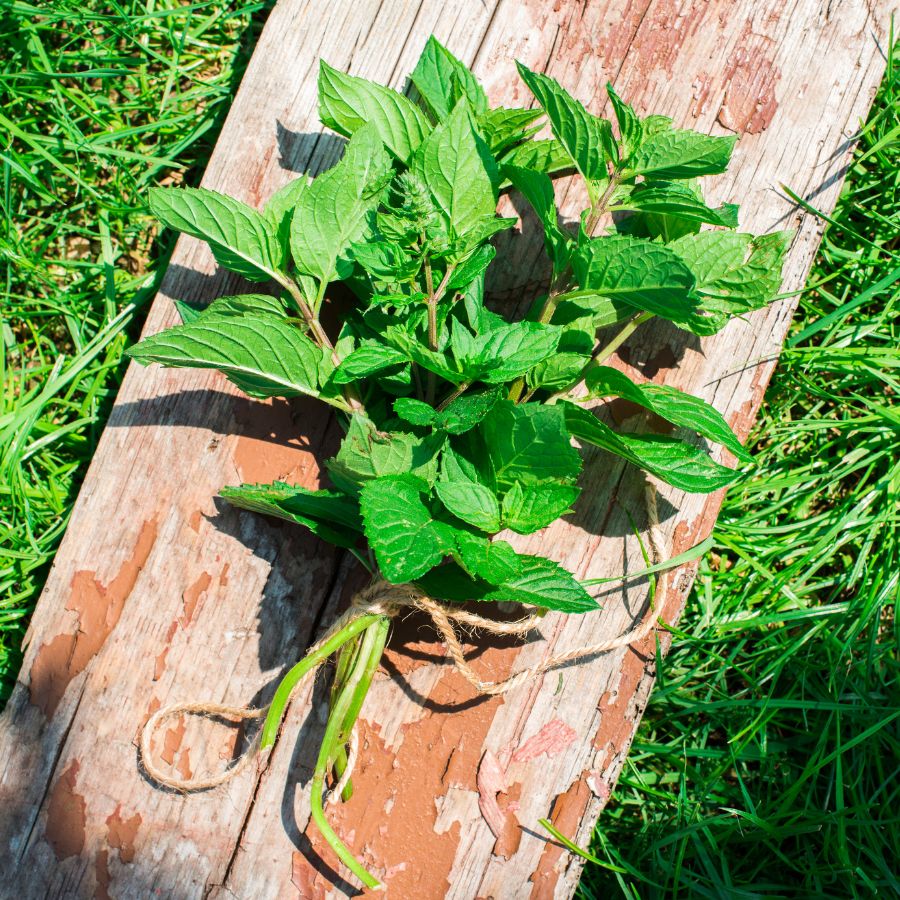
Skipping basic processing steps can cost you money. A raw harvest may look messy, spoil faster, or be harder to use.
For example, chaga is much more valuable when dried and cut properly. Herbs like wild mint or nettle often sell better when bundled neatly or partially dried. If you skip these steps, you may end up with something that looks unappealing or spoils quickly.
Collecting from the Wrong Area
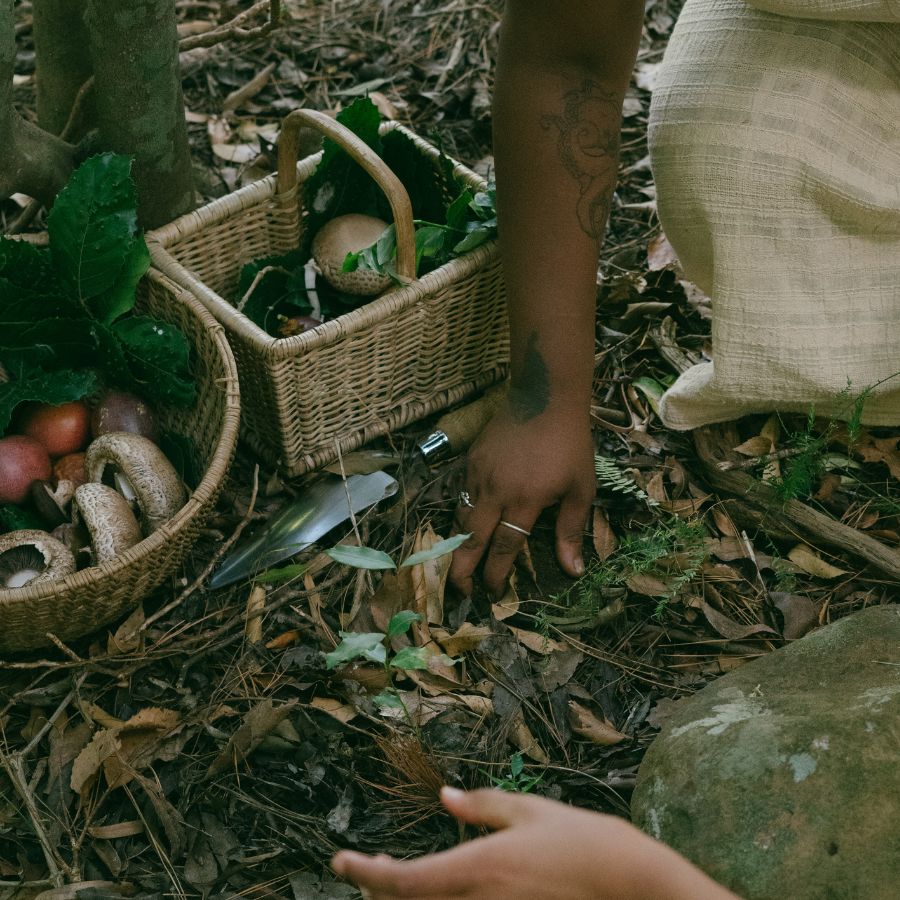
Harvesting in the wrong place can ruin a good find. Plants and mushrooms pulled from roadsides or polluted ground may be unsafe, no matter how fresh they look.
Buyers want to know their food comes from clean, responsible sources. If a spot is known for overharvesting or damage, it can make the whole batch less appealing.
These suburbia foraging tips can help you find overlooked spots that are surprisingly safe and productive.
Not Knowing the Market
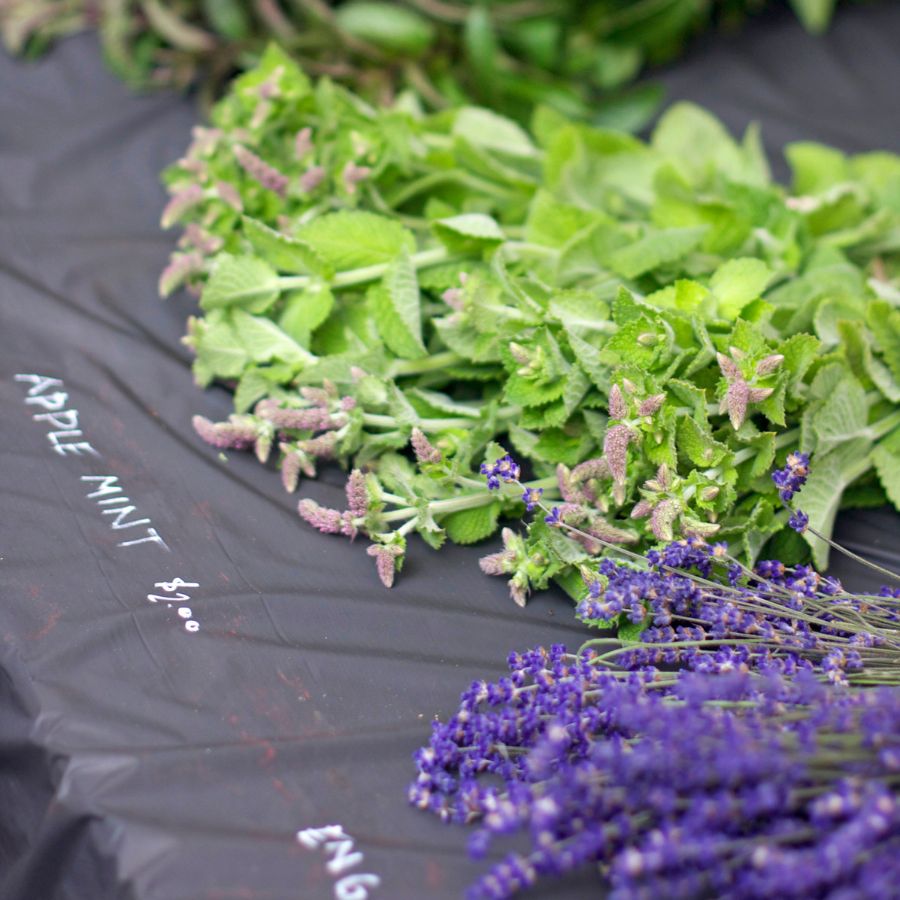
A rare plant isn’t valuable if nobody wants to buy it. If you gather in-demand species like wild ramps or black trumpets, you’re more likely to make a profit. Pay attention to what chefs, herbalists, or vendors are actually looking for.
Foraging with no plan leads to wasted effort and unsold stock. Keeping up with demand helps you bring home a profit instead of a pile of leftovers.
You can also brush up on foraging for survival strategies to identify the most versatile and useful wild foods.
Before you head out
Before embarking on any foraging activities, it is essential to understand and follow local laws and guidelines. Always confirm that you have permission to access any land and obtain permission from landowners if you are foraging on private property. Trespassing or foraging without permission is illegal and disrespectful.
For public lands, familiarize yourself with the foraging regulations, as some areas may restrict or prohibit the collection of mushrooms or other wild foods. These regulations and laws are frequently changing so always verify them before heading out to hunt. What we have listed below may be out of date and inaccurate as a result.
The Most Valuable Forageables in the State
Some of the most sought-after wild plants and fungi here can be surprisingly valuable. Whether you’re foraging for profit or personal use, these are the ones worth paying attention to:
Ramps (Allium tricoccum)
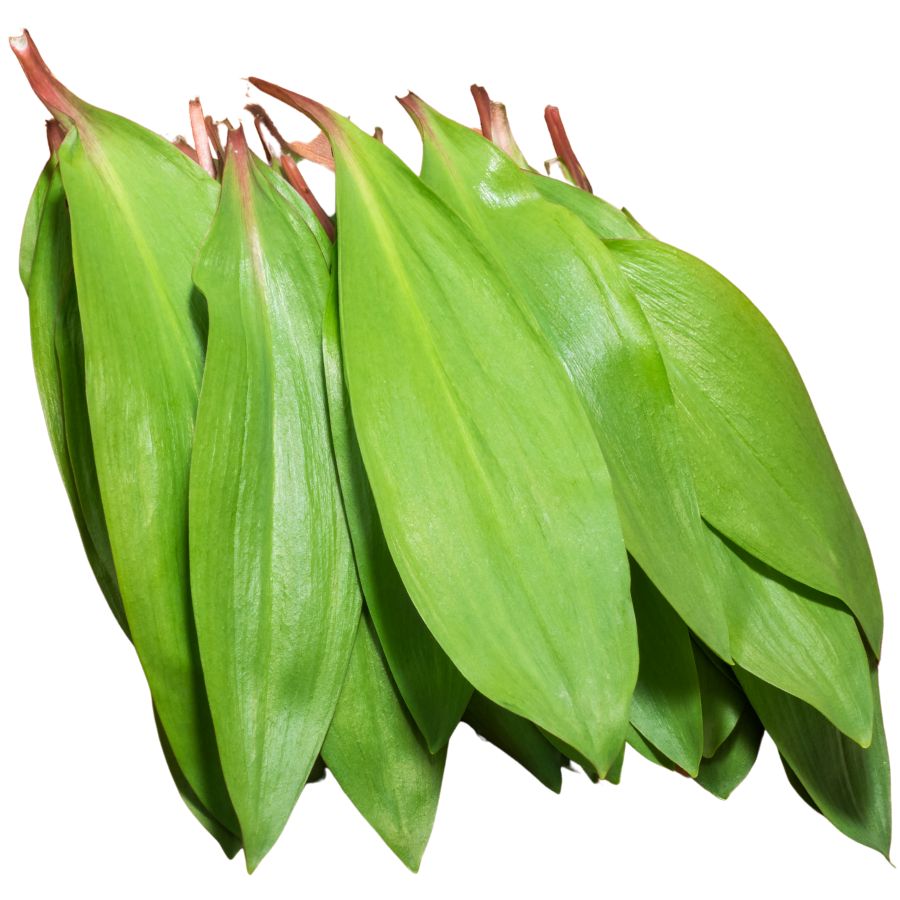
Ramps, often called wild garlic or wild leeks, are a flavorful edible plant prized by chefs and foragers alike. The plant has two or three wide green leaves, a reddish lower stem, and a white bulb with a strong onion-garlic aroma.
Toxic lookalikes like lily of the valley can confuse inexperienced foragers, but ramps always smell distinctly like onion when the leaves are torn. That scent is the easiest and most reliable clue for identification.
Cooks love using ramps in simple sautés, potato dishes, or blended into compound butters. The texture is soft and silky when cooked, while the raw bulbs offer a strong bite.
Their popularity in high-end cooking has made them one of the most expensive wild greens sold in markets. Because entire plants are often pulled for their bulbs, overharvesting has made sustainably gathered ramps even more valuable.
Morel Mushrooms (Morchella spp.)
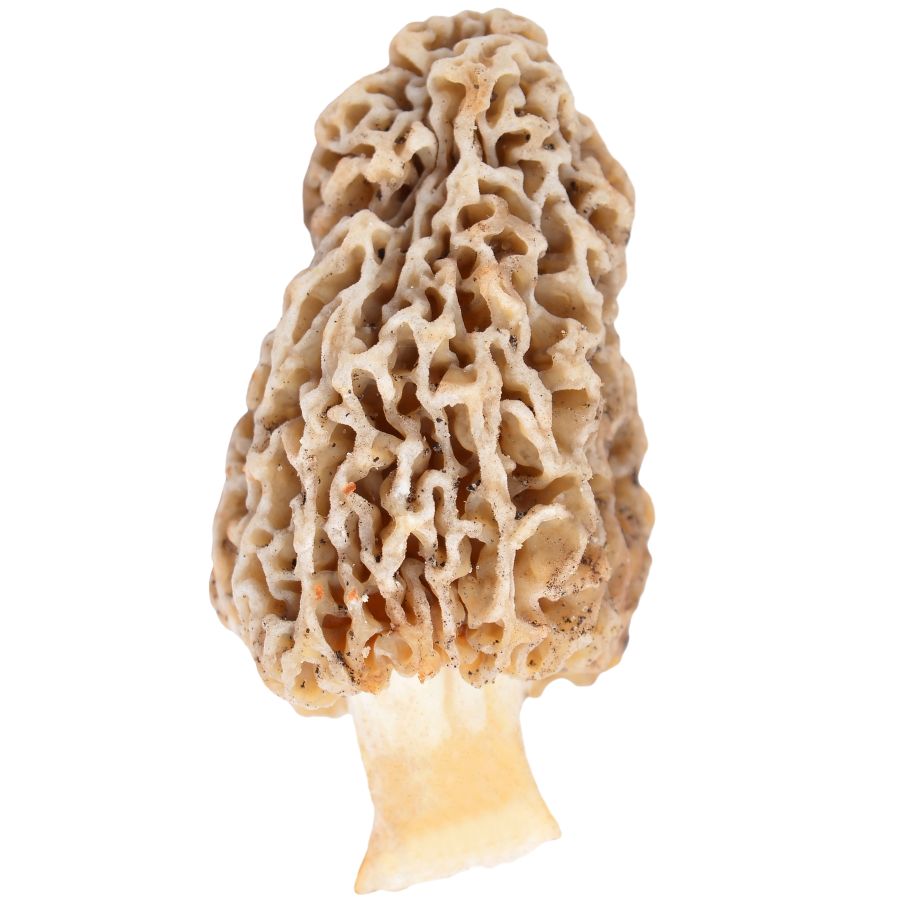
Morel mushrooms have a honeycomb-like surface with deep pits and ridges. The cap is fully attached to the stem, which helps set them apart from dangerous lookalikes like false morels that often have wrinkled, lobed caps and loose or cottony interiors.
The rich, nutty flavor and slightly chewy texture make morels a favorite in high-end kitchens. Many people sauté them in butter, stuff them, or dry them for later use because they hold their flavor extremely well.
Always cook morels thoroughly because raw ones can cause stomach upset, even when they look perfectly normal.
Morels are highly prized by chefs and home cooks, sometimes selling for over $50 per pound fresh and even more when dried.
Part of what makes morels so valuable is how hard they are to cultivate and find. They often grow in specific, unpredictable places, and their short harvesting window drives up both the demand and the price.
Maitake (Grifola frondosa)
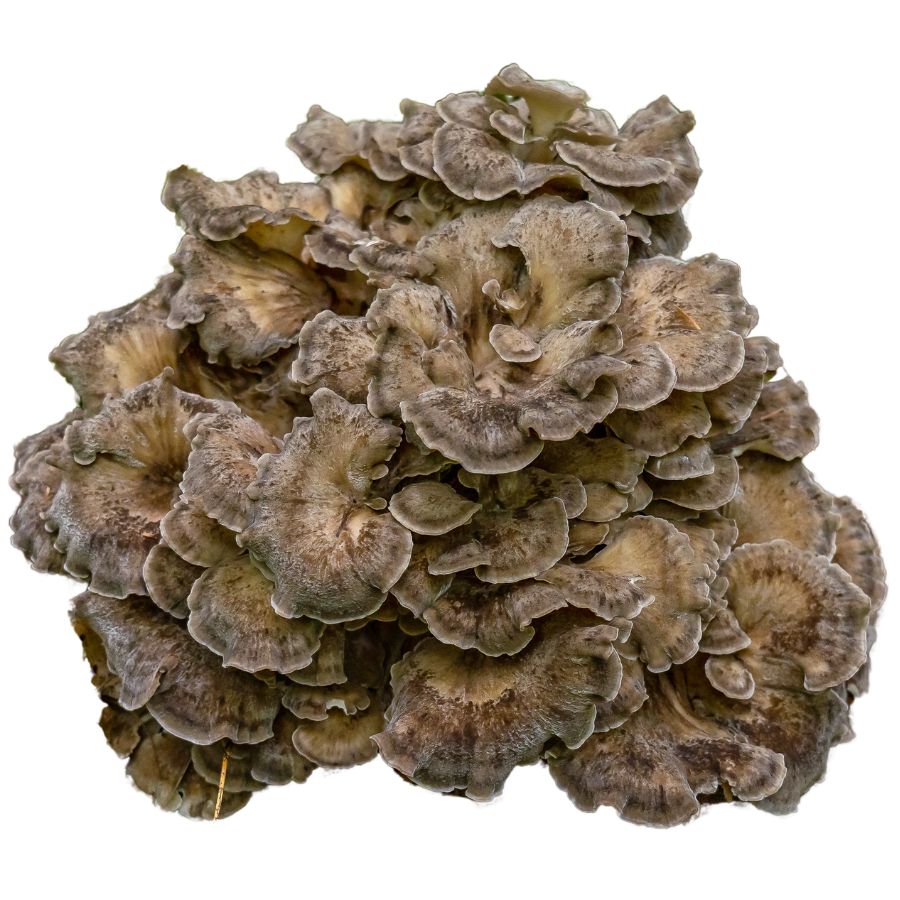
If you’ve ever found a large, leafy-looking mushroom near the base of an oak tree, it might’ve been maitake, also called hen of the woods. The lobes are soft, fan-shaped, and usually grow in a layered cluster that looks like brown petals.
Its flavor is strong and savory, and people often roast or fry it to bring out its concentrated taste. It’s firm when cooked, not spongy, and works well in grain bowls, stews, or simply on its own.
The whole fruiting body is edible, but the base can be fibrous and tough, so most people trim that part away.
While maitake does have a few lookalikes, like the umbrella polypore, most of them are thicker and less delicate in texture.
Fresh wild maitake can fetch high prices at specialty markets, and its shelf life improves dramatically when dehydrated. For those who forage or cook professionally, it’s one of the more valuable mushrooms to find.
Chanterelle Mushrooms (Cantharellus spp.)
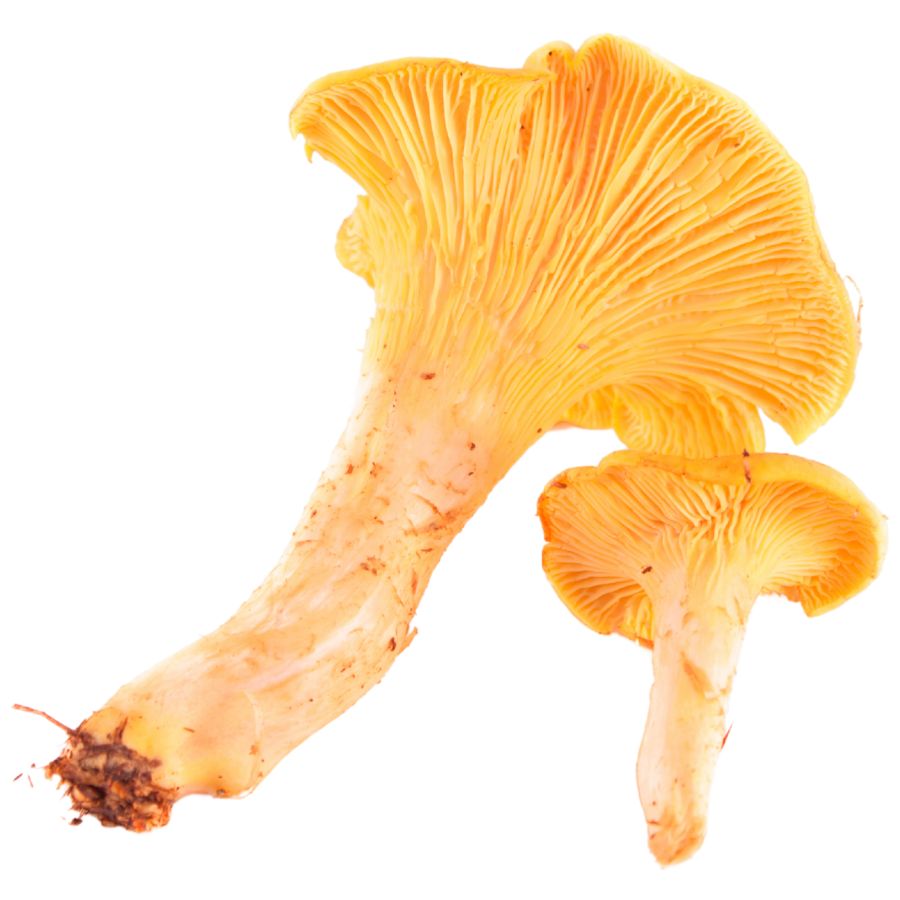
Golden chanterelles, also called egg mushrooms or girolles, are funnel-shaped and usually a bright yellow-orange with false gills that appear as deep, forked wrinkles. They have a fruity smell, almost like apricots, and a dense, meaty texture when cooked.
The part you want is the whole cap and stem, both of which soften nicely in butter or cream-based dishes. Their flavor is rich and peppery, which makes them popular in risottos, sautés, and soups.
A common lookalike is the jack-o’-lantern mushroom, which glows faintly in the dark and has true gills instead of shallow ridges. That one will give you stomach cramps, so pay close attention to the gill structure and color.
Fresh chanterelles can sell for over $20 per pound at farmers markets and restaurants, especially when demand is high. Their shelf life is short, but you can extend it by drying or pickling them soon after harvest.
Elderberry (Sambucus canadensis)
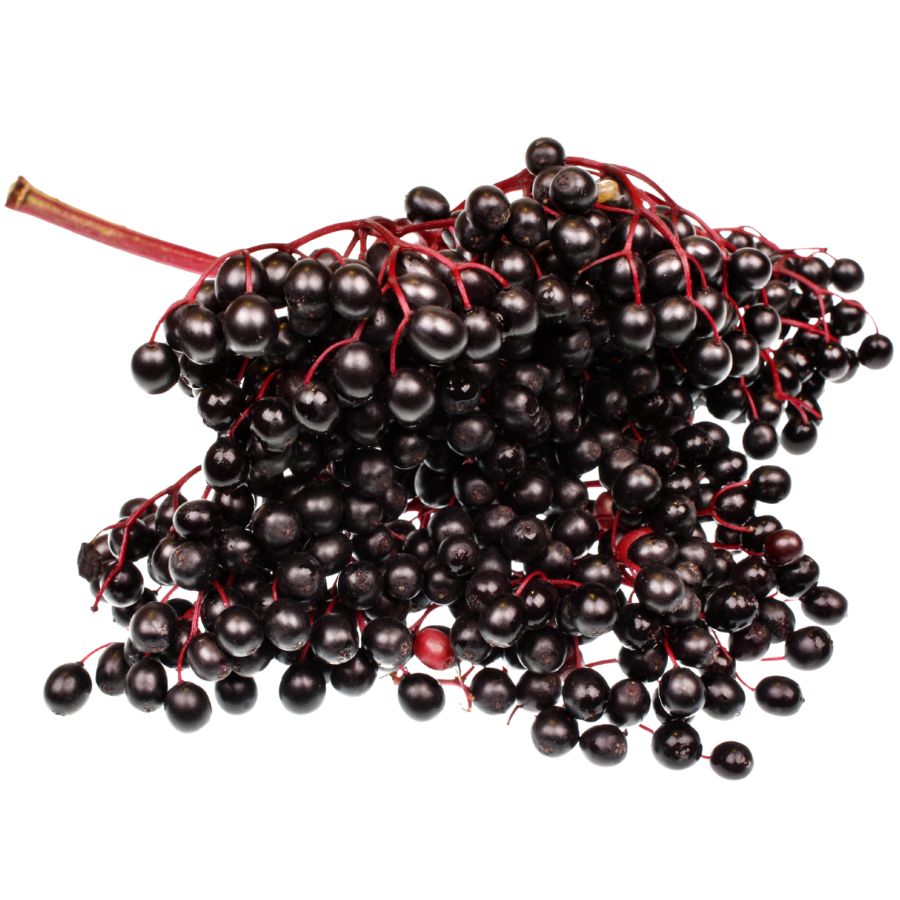
For centuries, elderberries have been gathered not just for food, but for making home remedies prized across the Southwest. Also called Mexican elder and tapiro, elderberry grows as a sprawling bush or small tree with clusters of tiny white flowers that turn into dusty blue-black berries.
There are toxic lookalikes you need to watch for, especially red elderberry, which has round clusters of bright red fruit. Elderberries grow in flatter, broader clusters and have a softer, more powdery appearance when ripe.
The berries have a deep, earthy flavor with a tart edge, and are usually cooked into jams, syrups, and baked goods to bring out their richness.
Make sure to avoid eating the raw berries, seeds, bark, or leaves because they can cause nausea unless they are properly cooked.
This plant stays valuable because the berries are used heavily in teas, tinctures, and syrups that people rely on for wellness, driving steady demand. Elderberries can also be dried and stored for months, making it even more profitable compared to foods that spoil quickly.
Spicebush (Lindera benzoin)
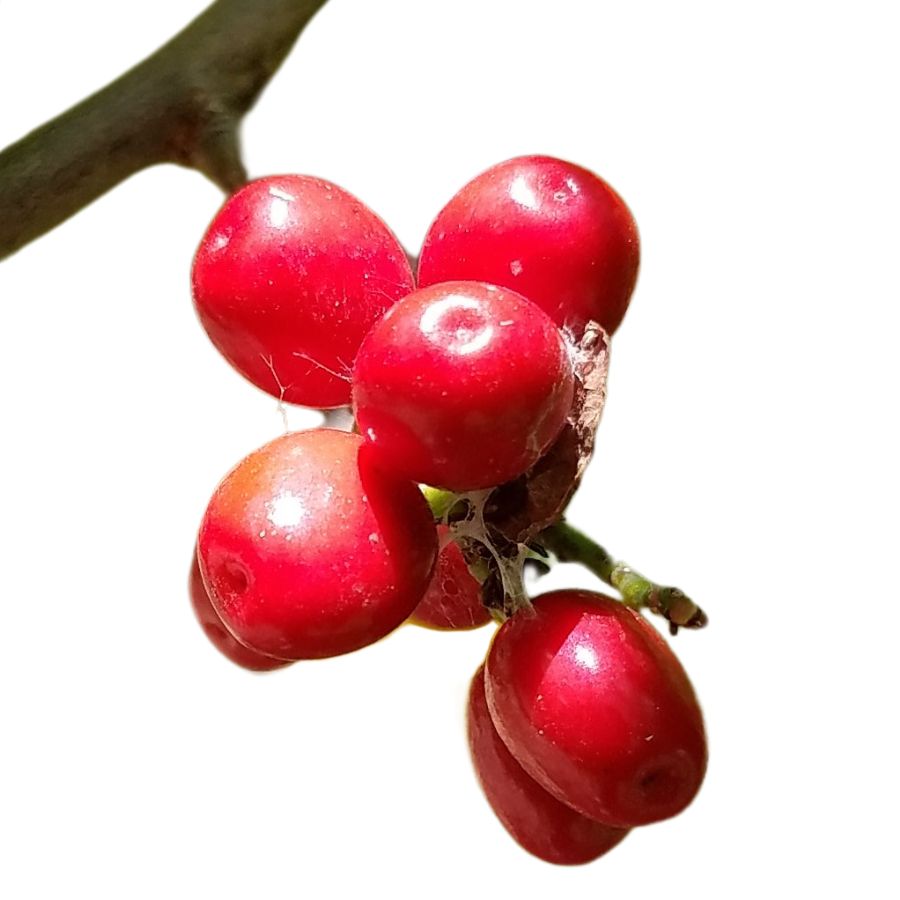
With their bright red color and clustered growth, spicebush berries are easy to pick out once you know the shrub’s distinctive lemon-scented leaves. Some people mix them up with winterberry, but winterberry lacks the spicy scent and has smooth-edged leaves instead of the alternate, veiny ones on spicebush.
The flavor is rich and complex, often described as a cross between black pepper, allspice, and citrus. Foragers usually dry the berries before using them in meat rubs, baked goods, or wildcrafted spice mixes.
Spicebush bark and leaves have traditional uses, but when it comes to edible parts, the berries are what people go after. They’re sometimes steeped whole in broths or ground into powder for stronger flavor.
Because they aren’t cultivated on a large scale, spicebush berries carry a higher value among foragers and food artisans. A small amount can go a long way, especially in recipes that highlight wild-sourced ingredients.
Pawpaw (Asimina triloba)
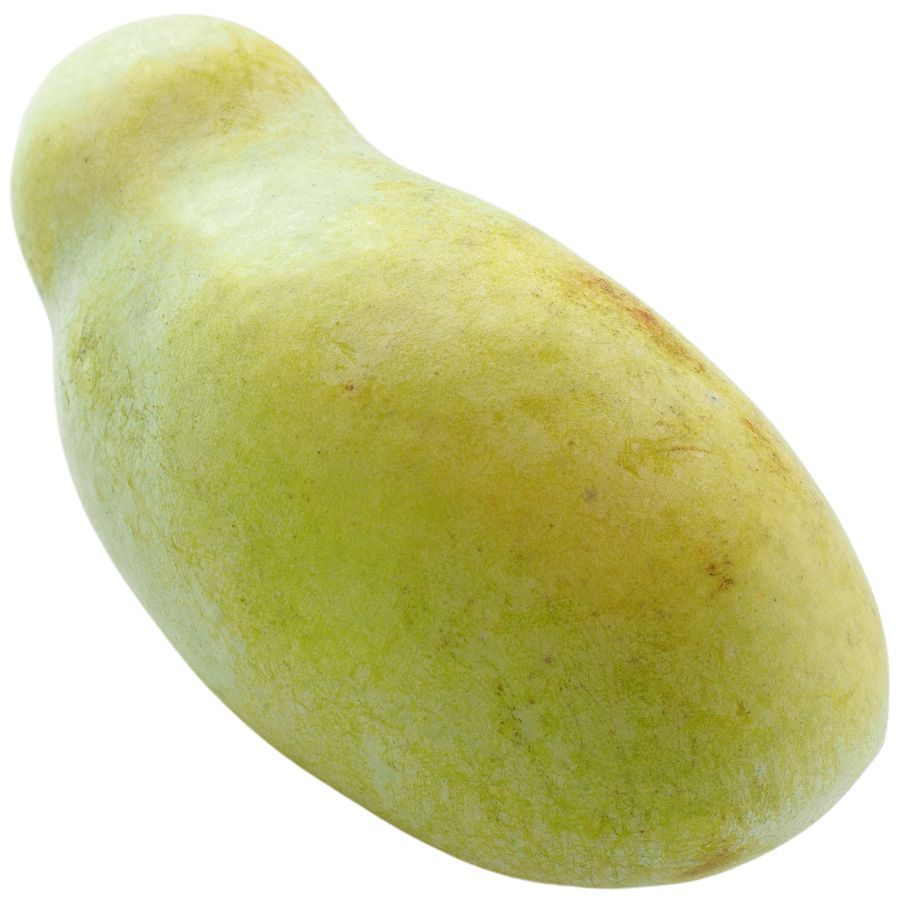
Pawpaw produces a green, mango-shaped fruit with soft yellow flesh inside and a taste that’s hard to forget. The flavor is rich and tropical, and the texture is thick like custard.
You’ll want to avoid the seeds and skin, but the pulp is edible and highly sought after. Some people cook it down into jams while others prefer it raw, straight from the peel.
There are other fruits in wooded areas that look similar, but pawpaw’s smell and size help separate it from anything potentially inedible. The way its fruits grow in clusters is also a giveaway.
Pawpaw isn’t commonly found in grocery stores, which makes it valuable for small growers and foragers. In-season, it can fetch a premium price at specialty food shops and farmers markets.
Black Walnut (Juglans nigra)
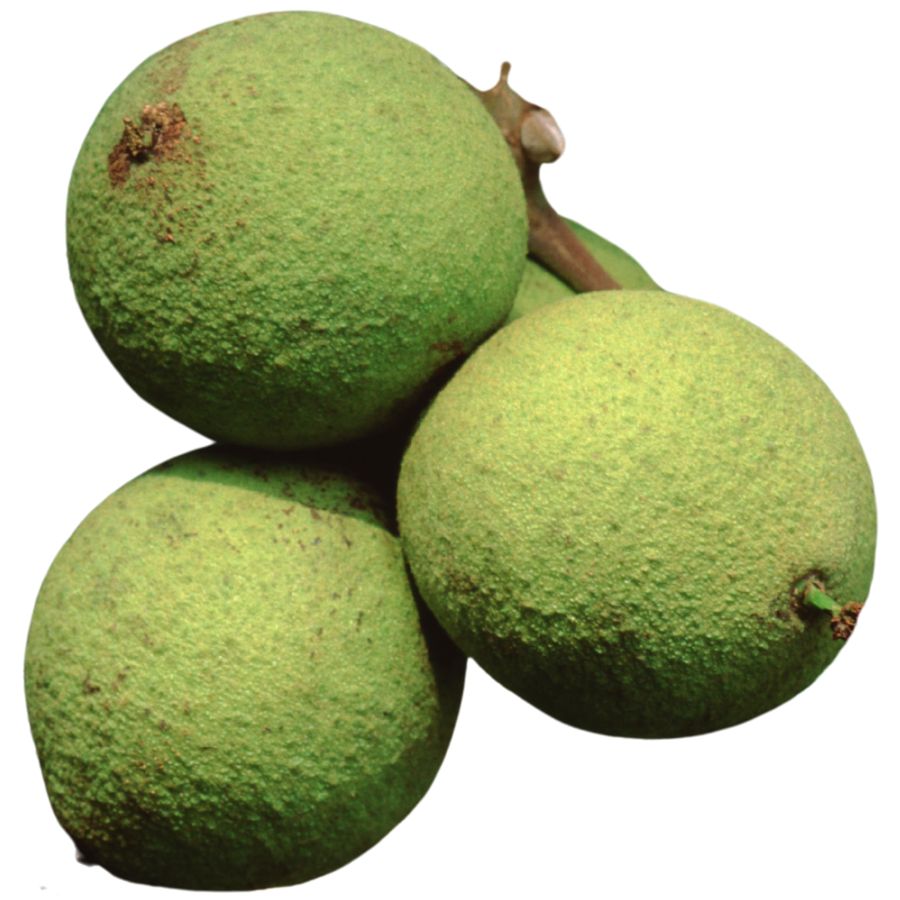
Black walnut grows a nut that’s prized for its strong, musky flavor and crunchy texture. The inner shell is extremely hard and often needs to be cracked with a vise or hammer to reach the oily, wrinkled seed inside.
Its nuts are most often roasted, chopped into desserts, or used in meat rubs and dressings. They’re also one of the few foraged tree nuts that can be stored long-term with very little processing.
The outer green husks leave a dark stain when bruised or broken open, and the nut itself is hidden inside a thick shell. While the fruit of the tree may resemble buckeye at first glance, black walnut leaves have a different shape and pattern, and buckeye seeds are toxic.
Prices stay high because harvesting takes time and experience, and the trees don’t lend themselves easily to large-scale production. Foragers and specialty food makers often pay a premium for wild black walnuts with intense flavor.
Hickory Nut (Carya spp.)
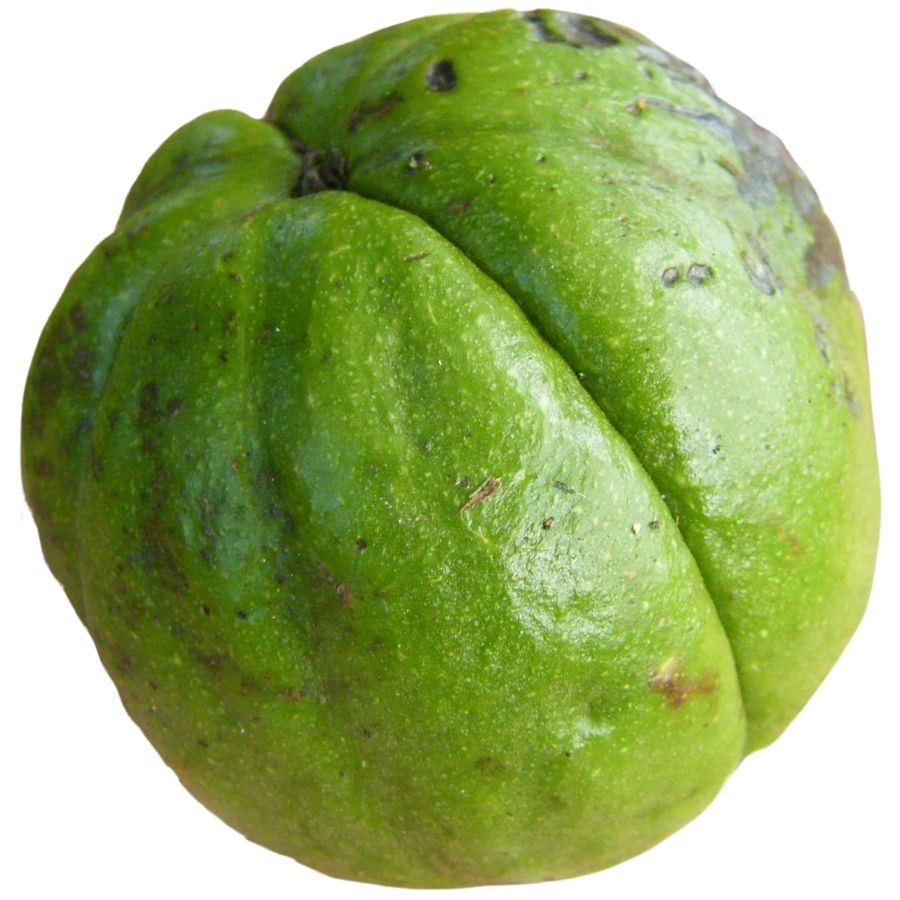
Hickory nuts grow inside a tough outer husk that splits open when the nut is ripe. The tree has compound leaves, and its bark can peel in long strips, especially on the shagbark variety.
The meat inside the nut is rich, sweet, and slightly oily, often compared to pecans but with a deeper flavor. It’s great raw, roasted, or ground into flour for use in traditional baking.
Bitternut hickories produce nuts that look similar but taste unpleasantly bitter and are not considered edible. You can usually tell them apart by the thinner shell and a more oblong shape.
Foragers value hickory nuts for their high energy content and long shelf life, especially after thorough drying. They’re time-consuming to crack, but the payoff can be worth it—shelled nutmeats often sell for premium prices in small-scale markets.
Black Trumpet (Craterellus fallax)
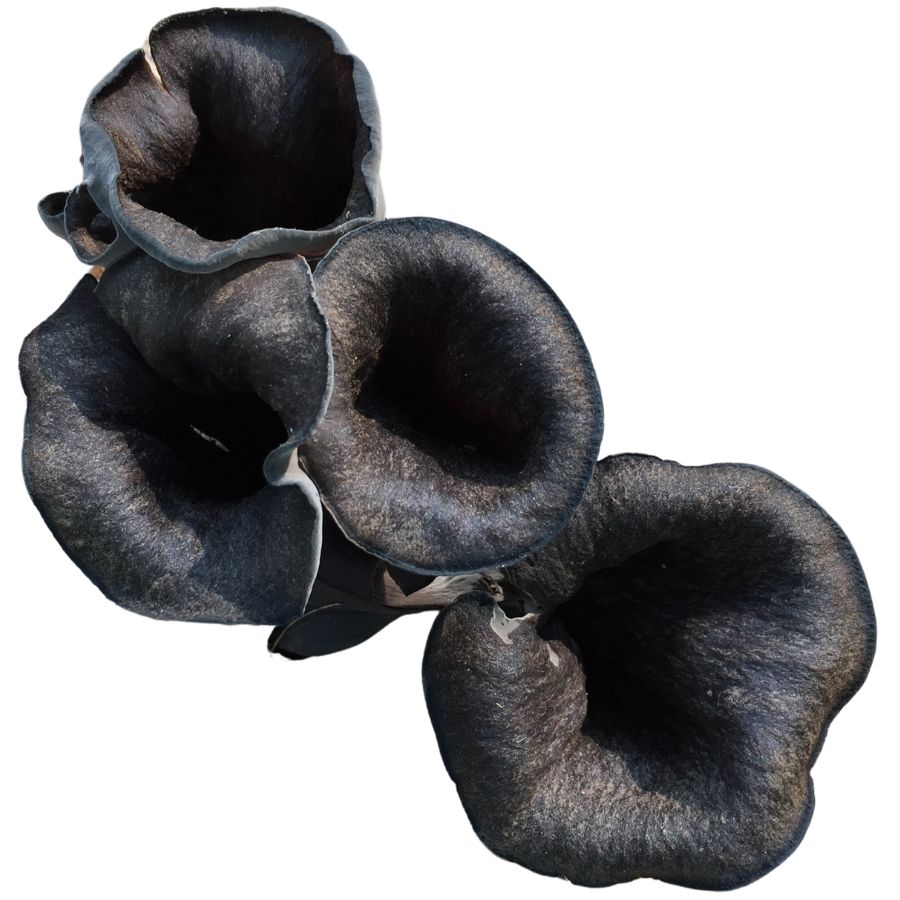
Black trumpet mushrooms have a thin, funnel-shaped body that ranges from deep gray to charcoal black, often with a wrinkled or wavy texture. They grow hollow from stem to top, with smooth undersides instead of gills.
The entire fruiting body is edible, and it cooks down quickly, releasing a deep, smoky aroma. Their texture is tender and slightly chewy, making them a favorite in risottos, cream sauces, or simply sautéed with butter.
One of the biggest dangers comes from confusing black trumpets with inedible cup fungi, which are often thicker and lack the delicate, papery walls. Another lookalike, devil’s urn, appears earlier in the season and has a more rigid, vase-like shape.
Black trumpets dry exceptionally well and retain their flavor for months, which boosts their market price. In the right places, they can sell for $30 to $50 per pound when dried, making them highly sought after by chefs and foragers alike.
Wild Bergamot (Monarda fistulosa)
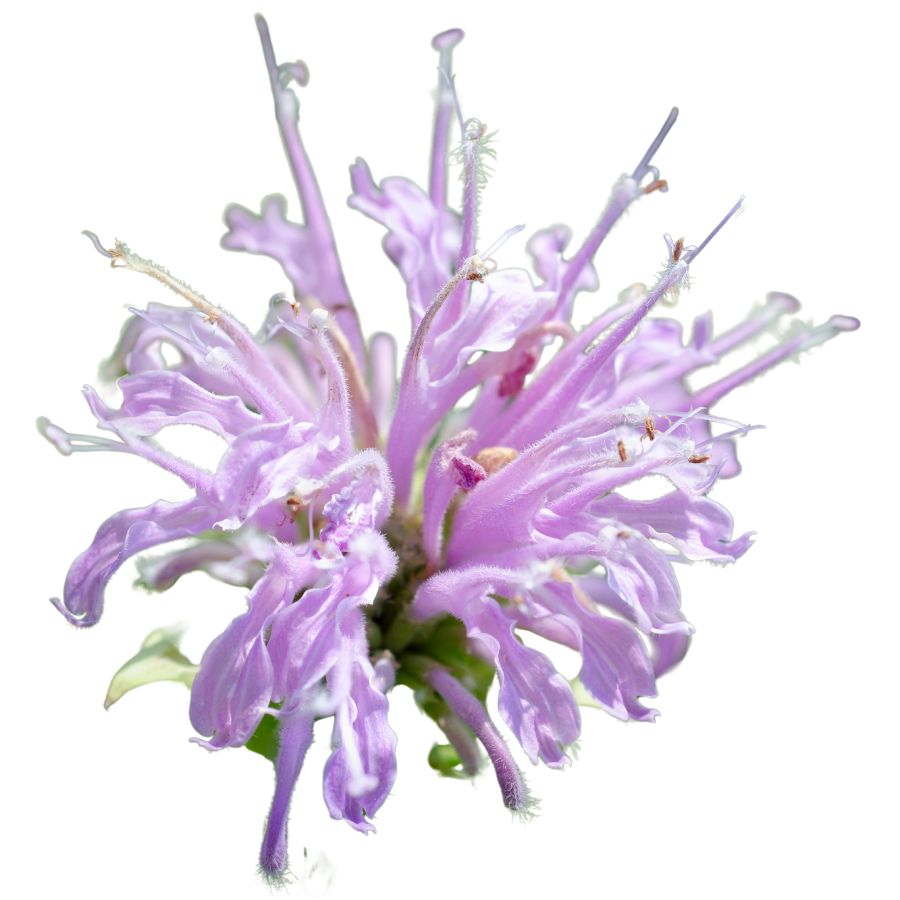
Wild bergamot, which also goes by names like bee balm and Oswego tea, has pale purple flowers that grow in tufted whorls and smell strongly when touched. The square stems and opposite leaves are a good indicator that you’re looking at a plant in the mint family.
The flavor is a mix of thyme and mint, and the texture is slightly coarse, especially when raw. People often use the flowers and leaves fresh in teas or dry them to store in jars.
It’s important to avoid confusing it with similar-looking mints that don’t have the same taste or safe track record. Some varieties of mountain mint, for example, have sharper scents and can cause digestive upset in larger amounts.
Even though it’s not a high-dollar herb, wild bergamot is valuable because of how much flavor you can get from just a few dried petals or leaves. That strong taste also means you don’t need much, which makes it last longer in the pantry.
Ostrich Fern Fiddleheads (Matteuccia struthiopteris)
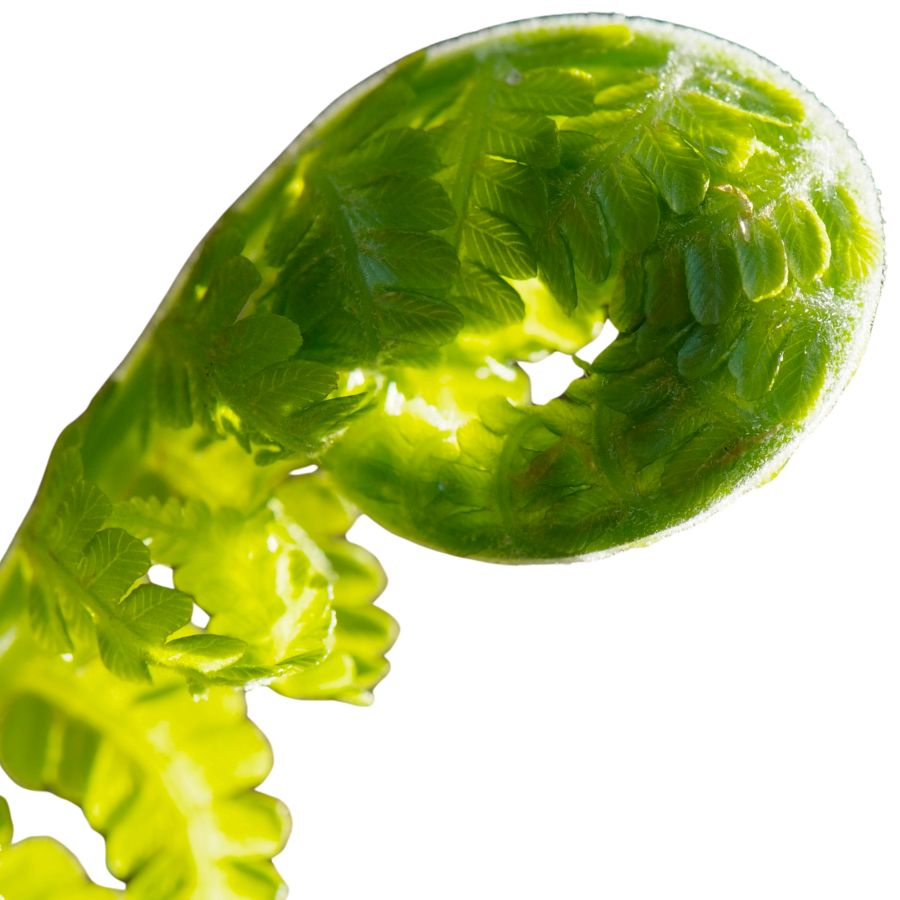
Ostrich fern fiddleheads, also referred to as fiddlehead greens or shuttlecock ferns, grow in tight green spirals that are eaten while still curled. Only the young shoots are edible and the rest of the plant should be left alone.
People often compare the flavor to a mix of spinach and asparagus, and the texture stays firm when cooked properly. The most common way to prepare them is by boiling or steaming, followed by a quick pan-fry.
These ferns are especially valuable to foragers and farmers’ markets because of how sought after they are in spring produce sales. A pound of fresh fiddleheads can sell for twenty dollars or more.
Lookalikes include bracken and lady fern, which can be toxic or cause digestive problems. Ostrich ferns have smooth green stalks and no fuzzy coating, unlike many of their less-safe counterparts.
Horseradish (Armoracia rusticana)
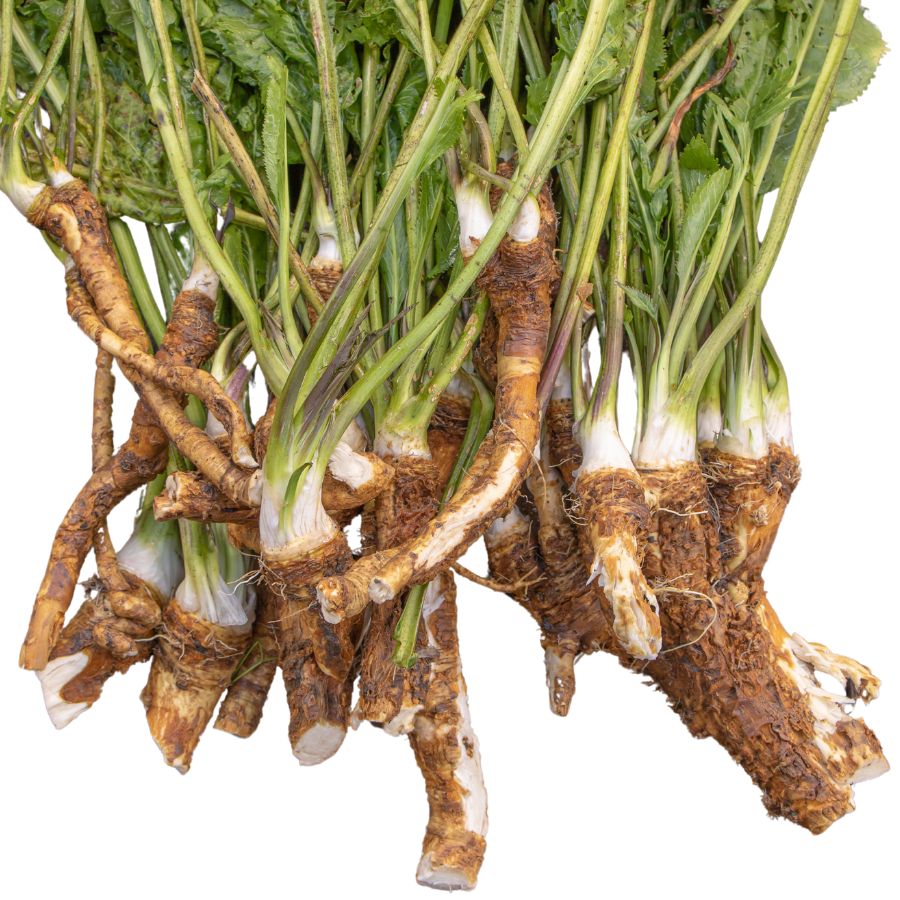
Horseradish has large, wrinkled green leaves and a thick, tapered root that’s usually off-white inside. The root is the main edible part, grated fresh or preserved in vinegar for a sharp, pungent condiment.
It delivers a hot, sinus-clearing flavor similar to mustard or wasabi, with a slightly coarse texture when raw. Most people use it in sauces or as a meat pairing, and it loses its heat quickly when cooked.
Burdock can look similar at first, but its leaves feel fuzzy underneath and the root has a duller color and no sulfur-like odor. Poison hemlock is also a risk, though its finely divided leaves and spotted stem set it apart easily.
The leaves are technically edible when young but not often used, and the flowers and seedpods are usually ignored. Processed horseradish can sell for up to ten dollars per jar, while fresh roots tend to bring in two to four dollars per pound.
Redbud (Cercis canadensis)
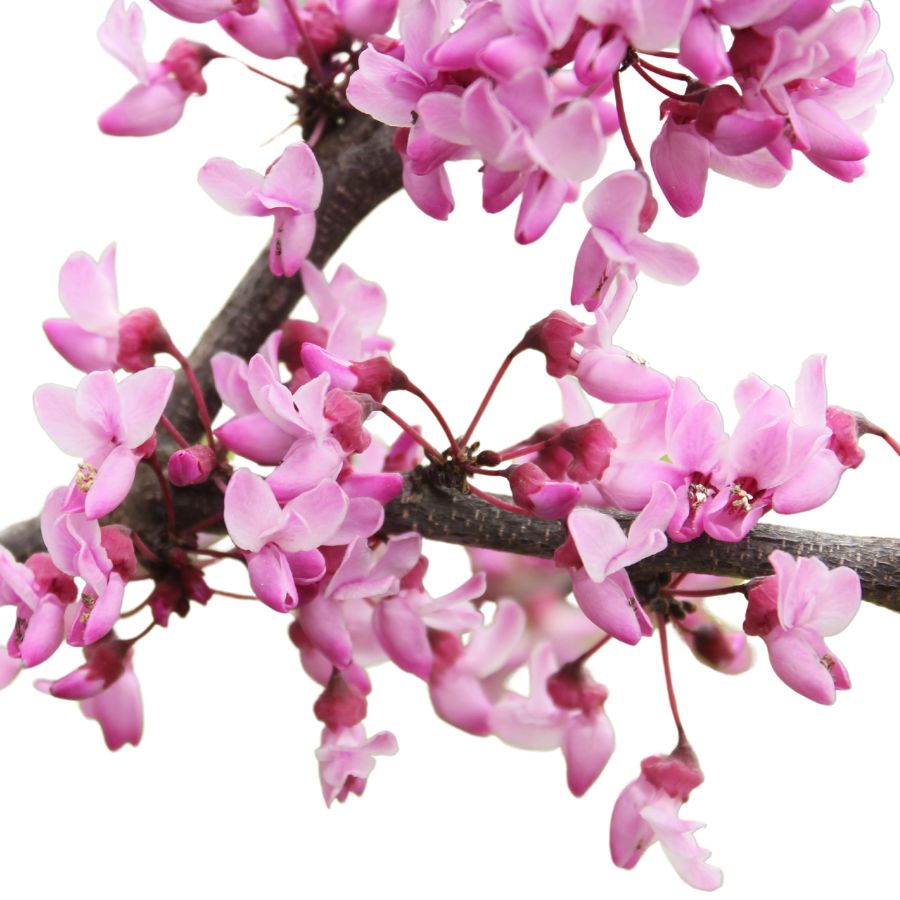
The pink flowers from the redbud tree are edible and used in all kinds of simple recipes. They’re a little tart with a raw snap and work well in salads or tossed on toast or omelets for a pop of color.
Some people also cook the young seed pods like snap peas, but only when they’re still small and green. The flavor gets bitter once the pods begin to toughen.
Redbud isn’t usually confused with other plants if you’re harvesting directly from a tree, but avoid collecting from lookalike shrubs that don’t bloom directly from their bark. The unusual flower placement—right out of the branches—is one of the clearest signs you’re looking at the right thing.
Chefs pay attention to redbud mostly for plating and garnish, so there’s not much resale value unless you’re targeting niche restaurant markets. The flowers don’t store long, but fresh ones can add interest to foraged meals and homemade condiments.
Staghorn Sumac (Rhus typhina)
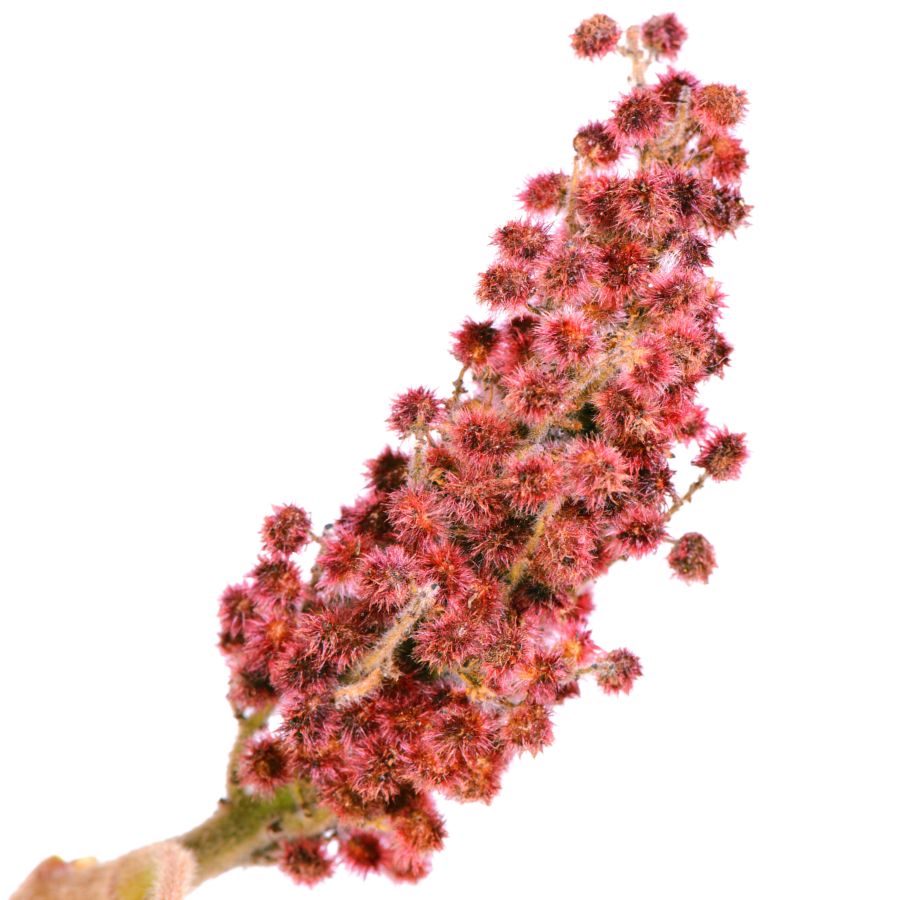
Staghorn sumac produces bright red berry clusters that grow upright and are covered in fine hairs. These berries are soaked in water to extract their tart, citrus-like flavor and then strained to make sumac-ade.
Each fruit cluster contains tiny drupes that are dry to the touch but packed with sour-tasting compounds on the outside. Don’t try to chew them raw since they’re full of hard seeds and not meant to be eaten whole.
Avoid confusing staghorn sumac with poison sumac, which has smooth stems and grows drooping white berries in wet areas. Even though the names sound similar, their habitats and berry color help tell them apart.
Ground sumac made from these berries can sell for several dollars an ounce as a tangy seasoning. It’s especially popular among chefs looking to add brightness without using lemon juice.
Wild Strawberry (Fragaria virginiana)
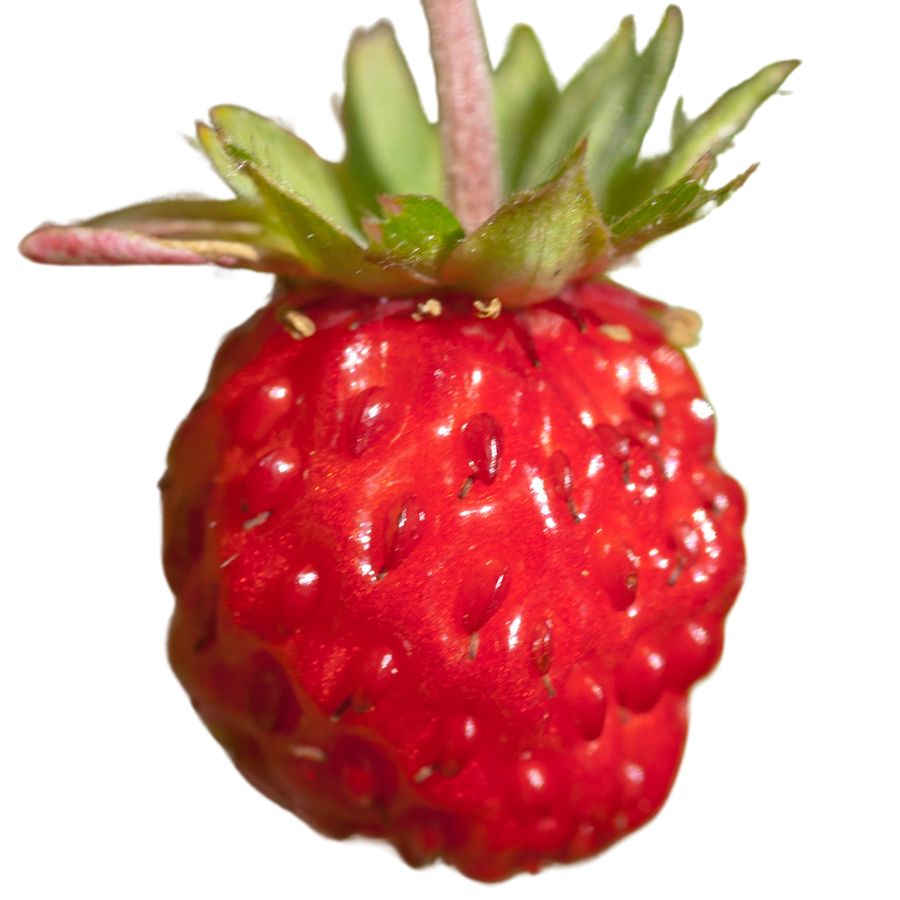
The wild strawberry has five-petaled white flowers and small red fruits that grow close to the ground on thin runners. Its toothed leaves grow in groups of three and are often mistaken for similar-looking plants like mock strawberry, which has yellow flowers and bland, dry fruit.
You can eat the ripe fruit, which has a sweet, concentrated strawberry flavor with a soft, juicy texture. Some people dry or freeze the berries, while others mash them into jam or cook them down into syrup.
The leaves and stems aren’t toxic, but they aren’t typically eaten either. Only the fruit is considered edible and worth harvesting.
Wild strawberries have limited commercial value because they’re small and delicate, but their taste is considered better than many store-bought varieties. That makes them popular in niche markets like gourmet preserves and foraged produce boxes.
American Persimmon (Diospyros virginiana)
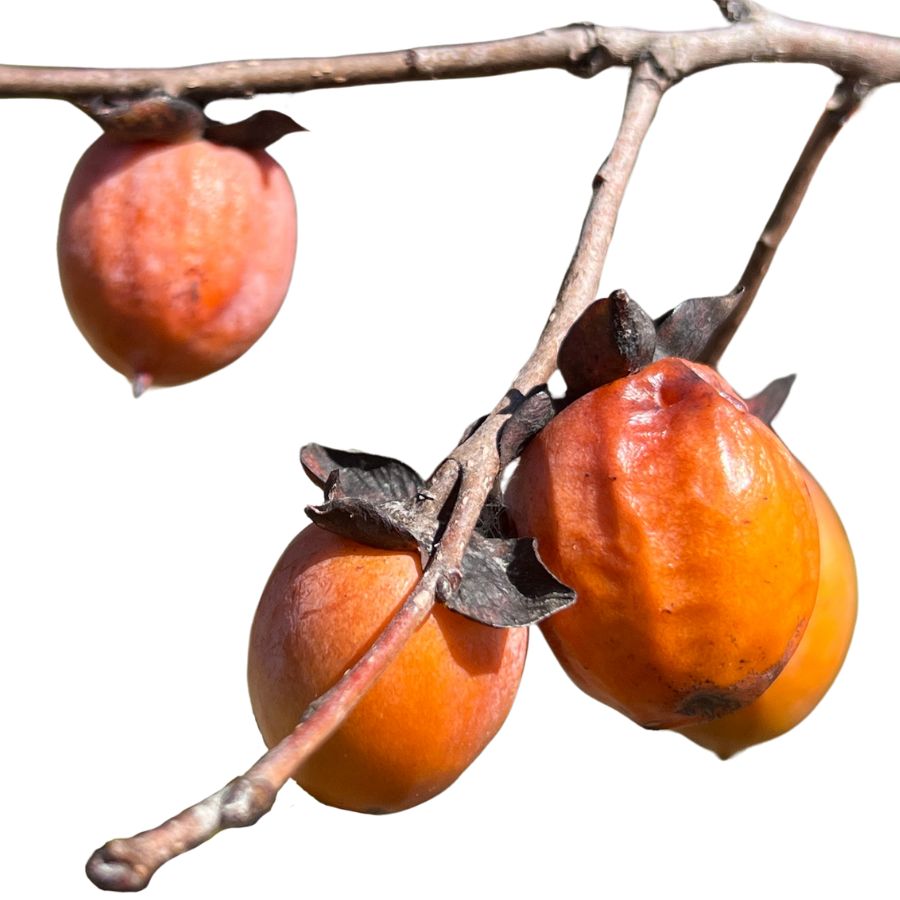
Persimmon fruit has a round shape and orange skin, usually with a slightly pointed end and a leafy cap still attached. It’s easy to bite into a ripe one and find it meltingly soft, with a flavor that’s both sugary and floral.
People sometimes confuse it with wild tomato-like fruits, but persimmons grow on hardwood trees and the fruit has a firmer skin. Avoid eating them when firm and unripe, as they contain tannins that cause a strong puckering sensation.
The pulp is the part most commonly used, and it’s great in baked goods or even frozen into a simple sorbet. Some cooks mash it into jam or dehydrate slices for a chewy snack.
Wild persimmons are valuable more for their flavor than for any consistent market price, though foragers and specialty sellers often get a few dollars per pound. The rich taste and the tree’s ability to grow in various soils make this fruit worth the effort to find.
Chicken of the Woods (Laetiporus sulphureus)
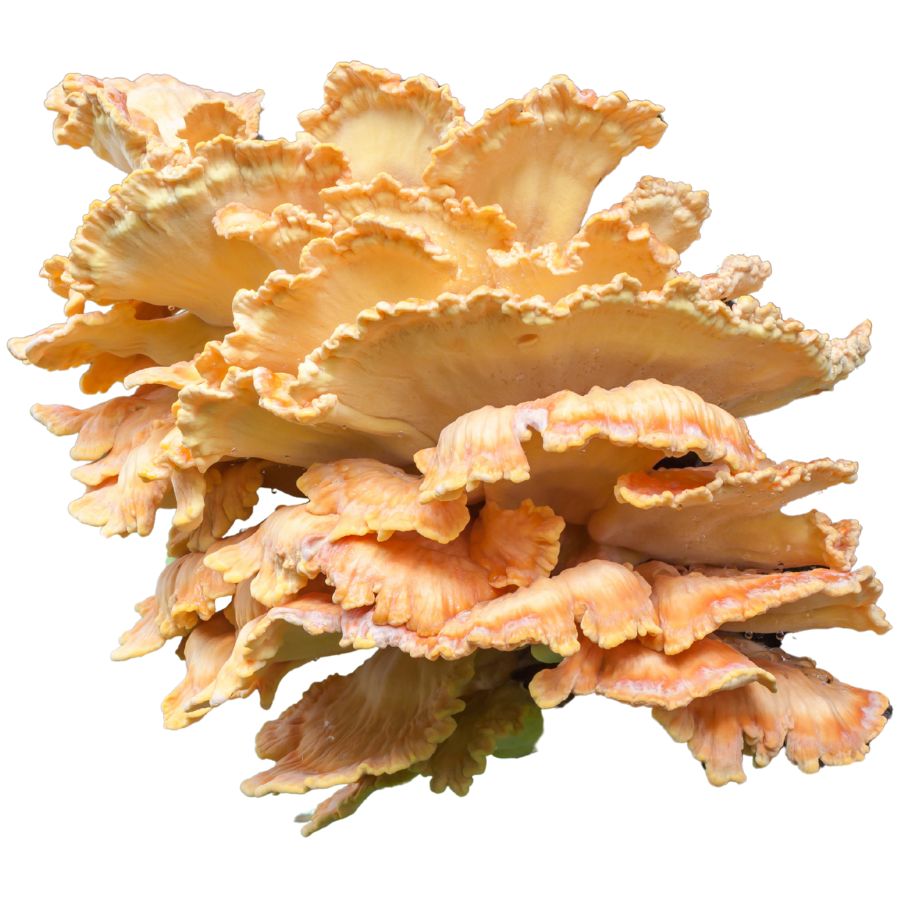
Chicken of the woods, also called sulfur shelf, grows in thick, shelf-like clusters with bright orange tops and yellow undersides. It develops on hardwood trees and fallen logs, forming a dense and slightly spongy mass.
Only the soft outer edges are typically eaten, while the older inner parts become tough and unpleasant. Its texture is meaty and chewy, and many people say it tastes a lot like chicken.
This mushroom doesn’t have gills and instead features tiny pores underneath, which helps separate it from toxic lookalikes like the jack-o’-lantern mushroom. The jack-o’-lantern has gills and glows faintly in the dark, which chicken of the woods does not.
Chicken of the woods is often sautéed, fried, or frozen for later, and can fetch a decent price at markets when fresh and tender. Just be careful—some people have reported mild stomach upset, especially when it’s harvested from conifers.
Japanese Knotweed (Reynoutria japonica)
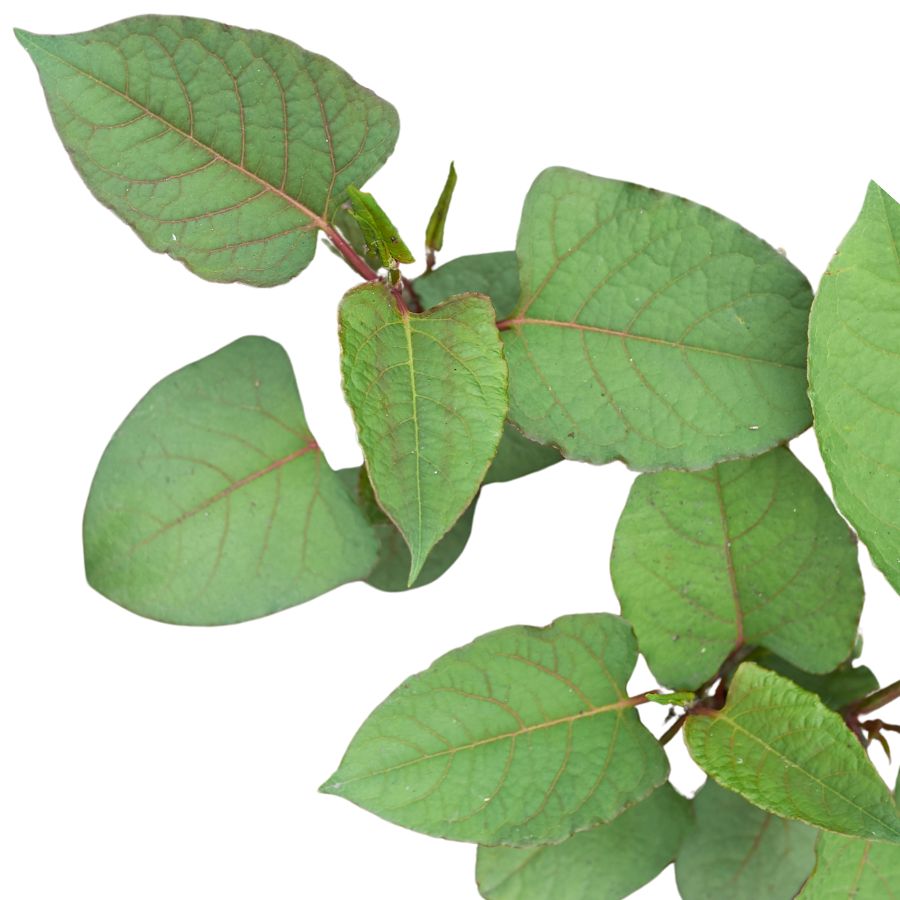
Japanese knotweed, also called fleeceflower or monkeyweed, has hollow, bamboo-like stems with heart-shaped leaves and sprays of creamy white flowers. Its young shoots are edible and taste like rhubarb with a tart, slightly earthy flavor.
You can cook the tender stalks into pies, sauces, or jams, and they’re sometimes fermented or pickled to preserve them. The leaves and mature stems aren’t edible and should be avoided.
It has toxic lookalikes like giant knotweed and smartweed, which don’t have the same edible young shoots or the same tart flavor. Always check for the distinct jointed stem structure before foraging.
Japanese knotweed has some value at farmers markets and in niche culinary circles, but it’s not particularly high in price. Its real appeal comes from its versatility in the kitchen and the novelty of turning an invasive plant into food.
Where to Find Valuable Forageables in the State
Some parts of the state are better than others when it comes to finding valuable wild plants and mushrooms. Here are the different places where you’re most likely to have luck:
| Plant | Locations |
| Ramps (Allium tricoccum) | – Monongahela National Forest – Kanawha State Forest – Kumbrabow State Forest |
| Morel Mushrooms (Morchella spp.) | – New River Gorge National Park – Coopers Rock State Forest – Seneca State Forest |
| Maitake (Grifola frondosa) | – Greenbrier State Forest – Holly River State Park – Panther Wildlife Management Area |
| Chanterelle Mushrooms (Cantharellus spp.) | – Twin Falls Resort State Park – Cabwaylingo State Forest – Babcock State Park |
| Elderberry (Sambucus canadensis) | – Berkeley Springs State Park – Camp Creek State Park – Chief Logan State Park |
| Spicebush (Lindera benzoin) | – Beech Fork State Park – Audra State Park – Bluestone Wildlife Management Area |
| Pawpaw (Asimina triloba) | – Cacapon Resort State Park – Bluestone State Park – Greenbrier River Trail |
| Black Walnut (Juglans nigra) | – Tygart Lake State Park – Tomlinson Run State Park – North Bend State Park |
| Hickory Nut (Carya spp.) | – Watoga State Park – Calvin Price State Forest – Little Beaver State Park |
| Black Trumpet (Craterellus fallax) | – Cranberry Glades Botanical Area – Spruce Knob area – North Fork Mountain Trail |
| Wild Bergamot (Monarda fistulosa) | – Berkeley Springs State Park – Cacapon Resort State Park – Dolly Sods Wilderness |
| Ostrich Fern Fiddleheads (Matteuccia struthiopteris) | – Monongahela National Forest – Cranberry Wilderness – Pipestem Resort State Park |
| Horseradish (Armoracia rusticana) | – Road edges near Shepherdstown – Abandoned farmsteads near Lewisburg – Drainage ditches around Morgantown |
| Redbud (Cercis canadensis) | – Cacapon Resort State Park – Babcock State Park – Little Levels Heritage Fairgrounds |
| Staghorn Sumac (Rhus typhina) | – Greenbrier River Trail – Blackwater Falls State Park – Coopers Rock roadside areas |
| Wild Strawberry (Fragaria virginiana) | – Holly River State Park – Spruce Knob–Seneca Rocks National Recreation Area – Camp Creek State Park |
| American Persimmon (Diospyros virginiana) | – Bluestone State Park – Beech Fork Lake area – Greenbrier State Forest |
| Chicken of the Woods (Laetiporus sulphureus) | – Kanawha State Forest – Cabwaylingo State Forest – Canaan Valley Resort State Park |
| Japanese Knotweed (Reynoutria japonica) | – New River Gorge Trailheads – Cacapon River corridor – Cheat River floodplain |
When to Forage for Maximum Value
Every valuable wild plant or mushroom has its season. Here’s a look at the best times for harvest:
| Plants | Valuable Parts | Best Harvest Season |
| Ramps (Allium tricoccum) | Leaves, bulbs | March – Early May |
| Morel Mushrooms (Morchella spp.) | Fruiting bodies | April – May |
| Maitake (Grifola frondosa) | Fruiting bodies | September – October |
| Chanterelle Mushrooms (Cantharellus spp.) | Fruiting bodies | July – Early September |
| Elderberry (Sambucus canadensis) | Flowers, berries | June (flowers), August (berries) |
| Spicebush (Lindera benzoin) | Leaves, berries, twigs | May – September |
| Pawpaw (Asimina triloba) | Fruit | September – Early October |
| Black Walnut (Juglans nigra) | Nuts | September – October |
| Hickory Nut (Carya spp.) | Nuts | September – October |
| Black Trumpet (Craterellus fallax) | Fruiting bodies | August – September |
| Wild Bergamot (Monarda fistulosa) | Leaves, flowers | July – August |
| Ostrich Fern Fiddleheads (Matteuccia struthiopteris) | Fiddleheads | April – Early May |
| Horseradish (Armoracia rusticana) | Roots | October – November, Early Spring |
| Redbud (Cercis canadensis) | Flowers, young pods | April – May |
| Staghorn Sumac (Rhus typhina) | Berries | August – September |
| Wild Strawberry (Fragaria virginiana) | Berries | May – June |
| American Persimmon (Diospyros virginiana) | Fruit | October – November |
| Chicken of the Woods (Laetiporus sulphureus) | Fruiting bodies | August – October |
| Japanese Knotweed (Reynoutria japonica) | Young shoots | April – Early May |
One Final Disclaimer
The information provided in this article is for general informational and educational purposes only. Foraging for wild plants and mushrooms involves inherent risks. Some wild plants and mushrooms are toxic and can be easily mistaken for edible varieties.
Before ingesting anything, it should be identified with 100% certainty as edible by someone qualified and experienced in mushroom and plant identification, such as a professional mycologist or an expert forager. Misidentification can lead to serious illness or death.
All mushrooms and plants have the potential to cause severe adverse reactions in certain individuals, even death. If you are consuming foraged items, it is crucial to cook them thoroughly and properly and only eat a small portion to test for personal tolerance. Some people may have allergies or sensitivities to specific mushrooms and plants, even if they are considered safe for others.
Foraged items should always be fully cooked with proper instructions to ensure they are safe to eat. Many wild mushrooms and plants contain toxins and compounds that can be harmful if ingested.

